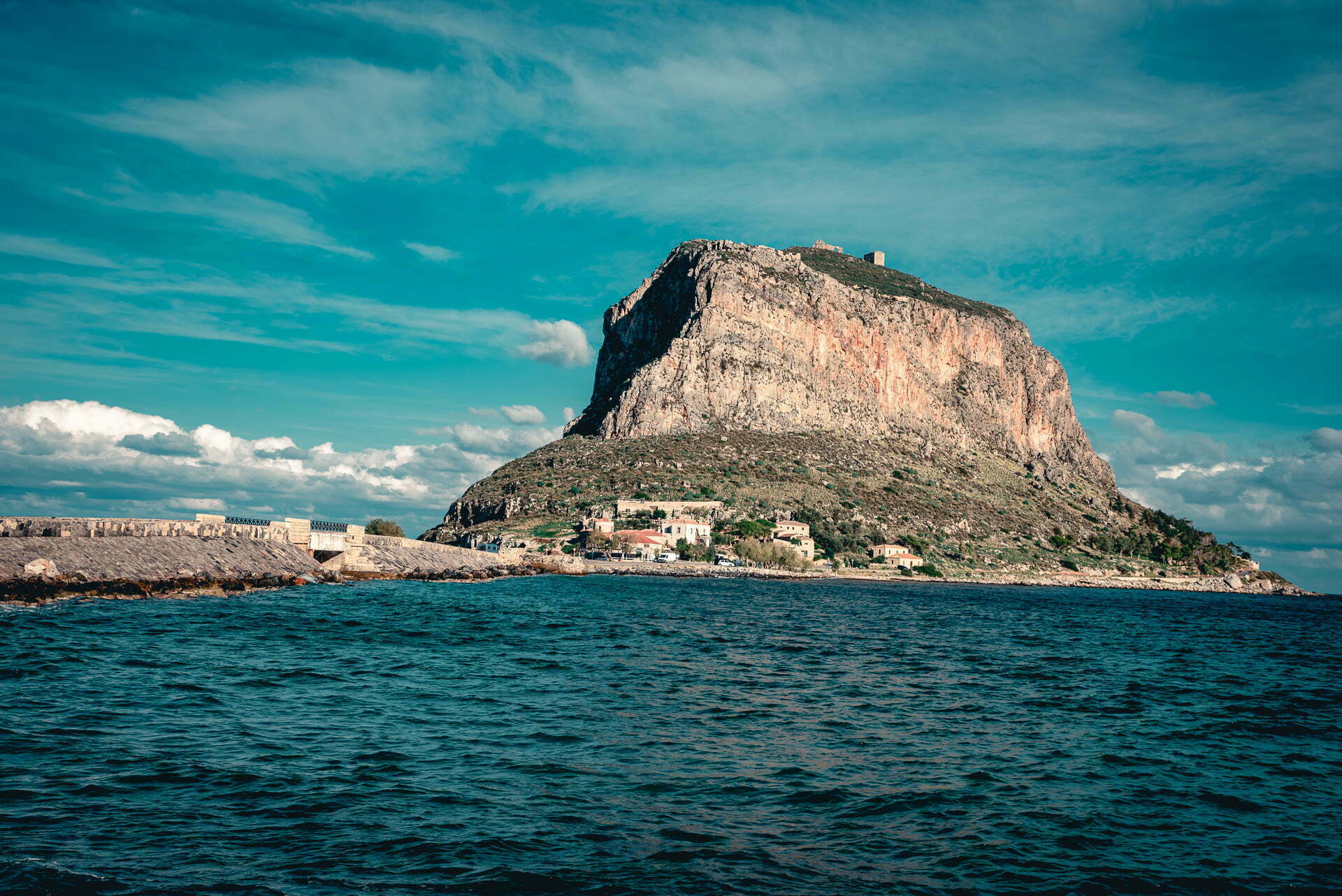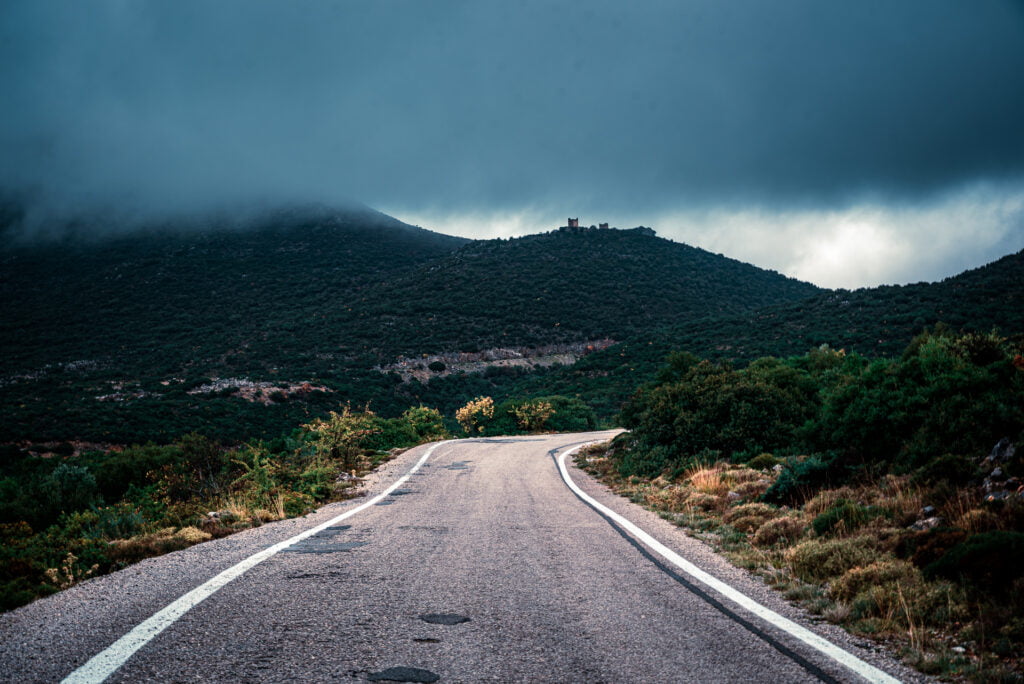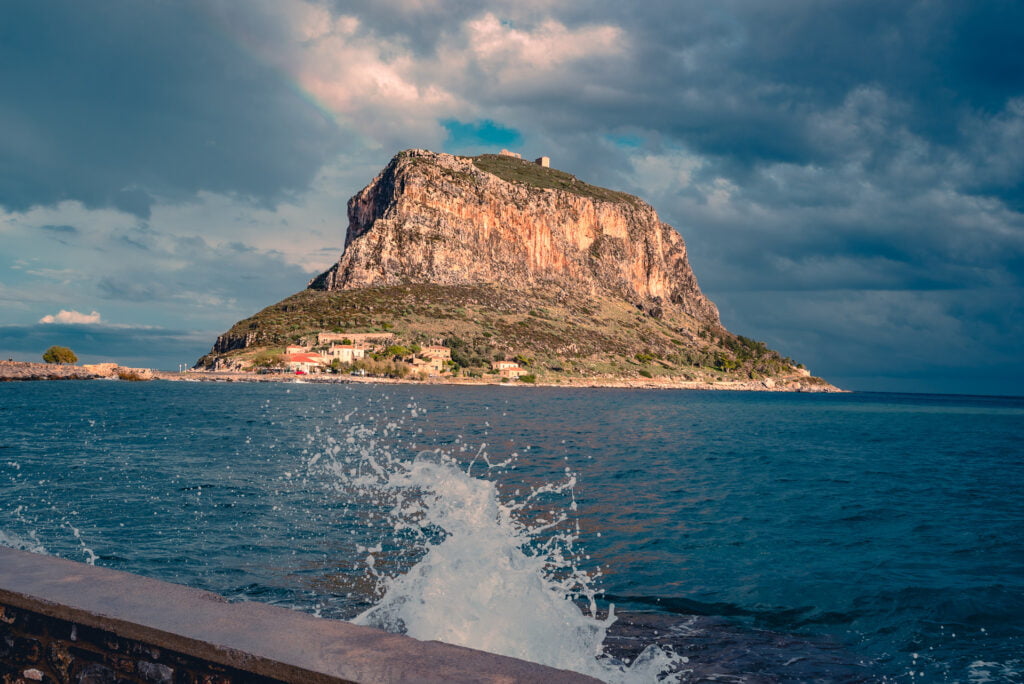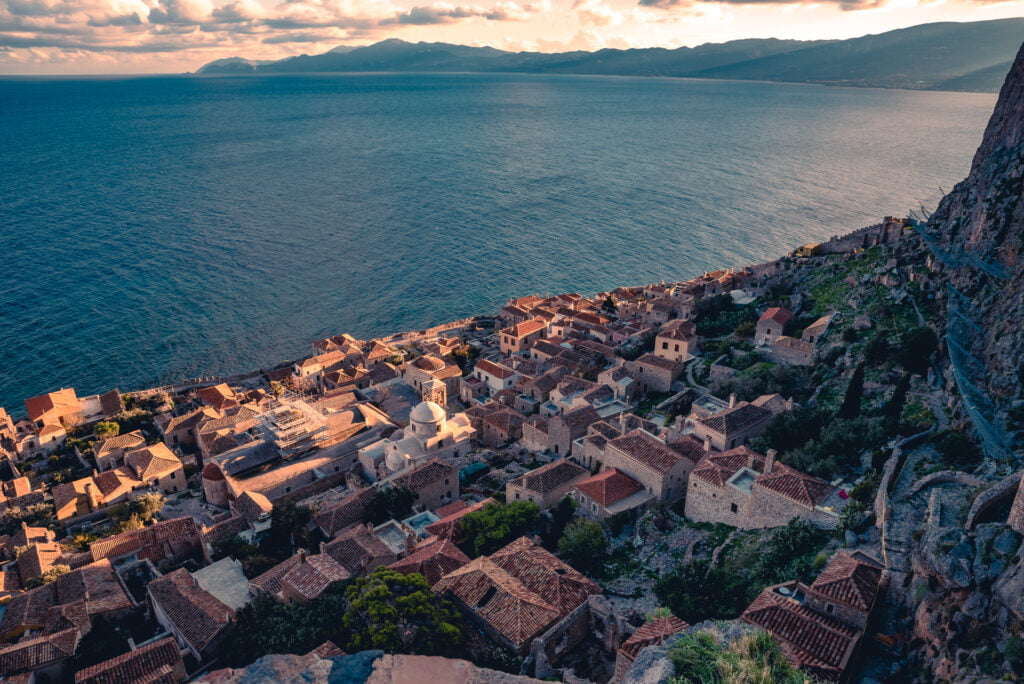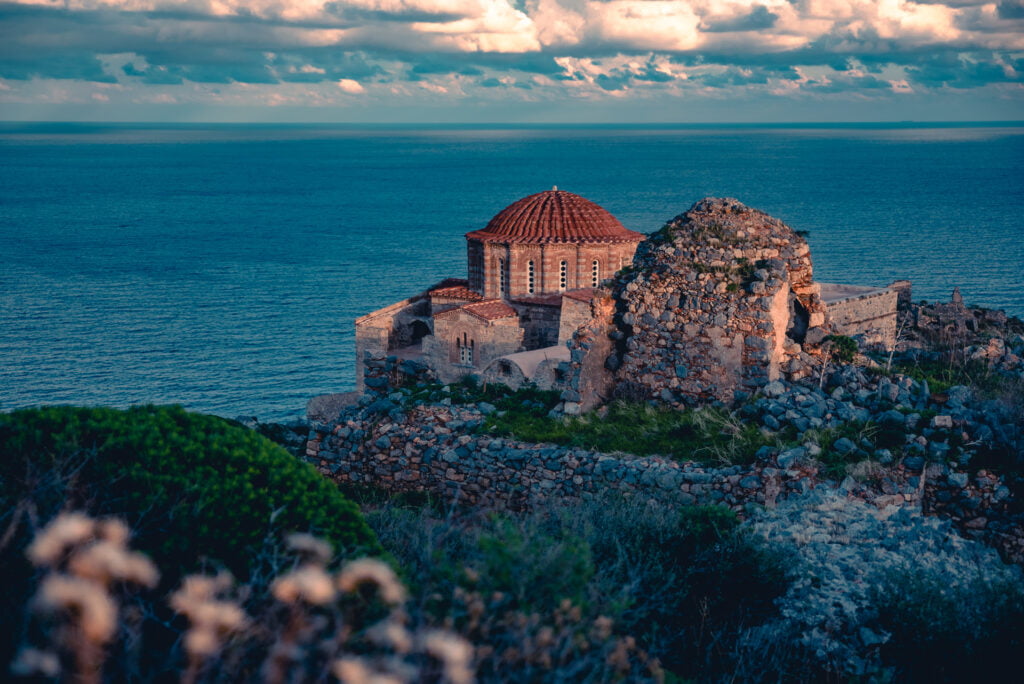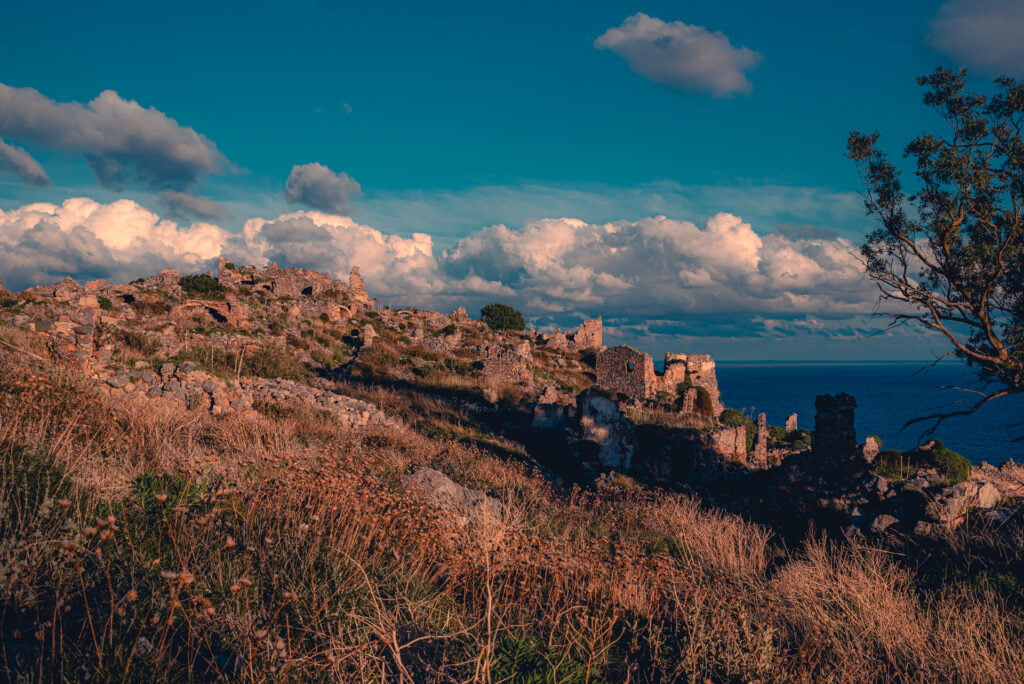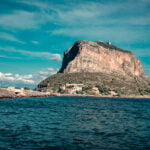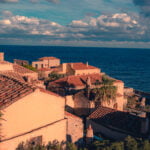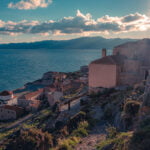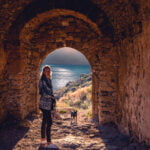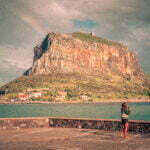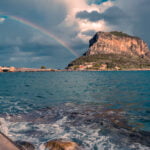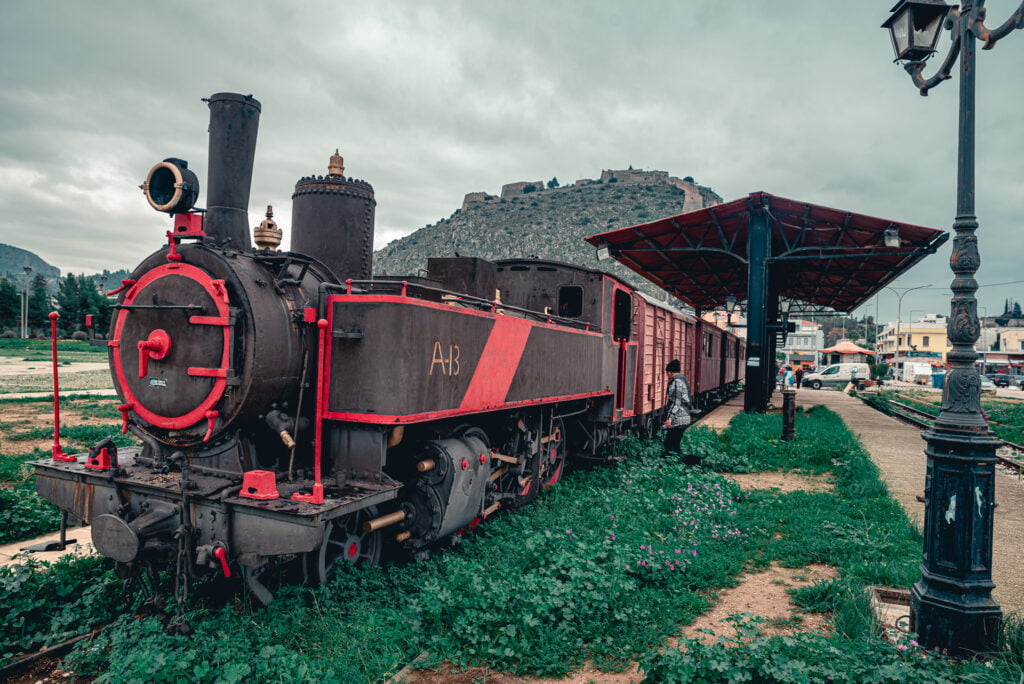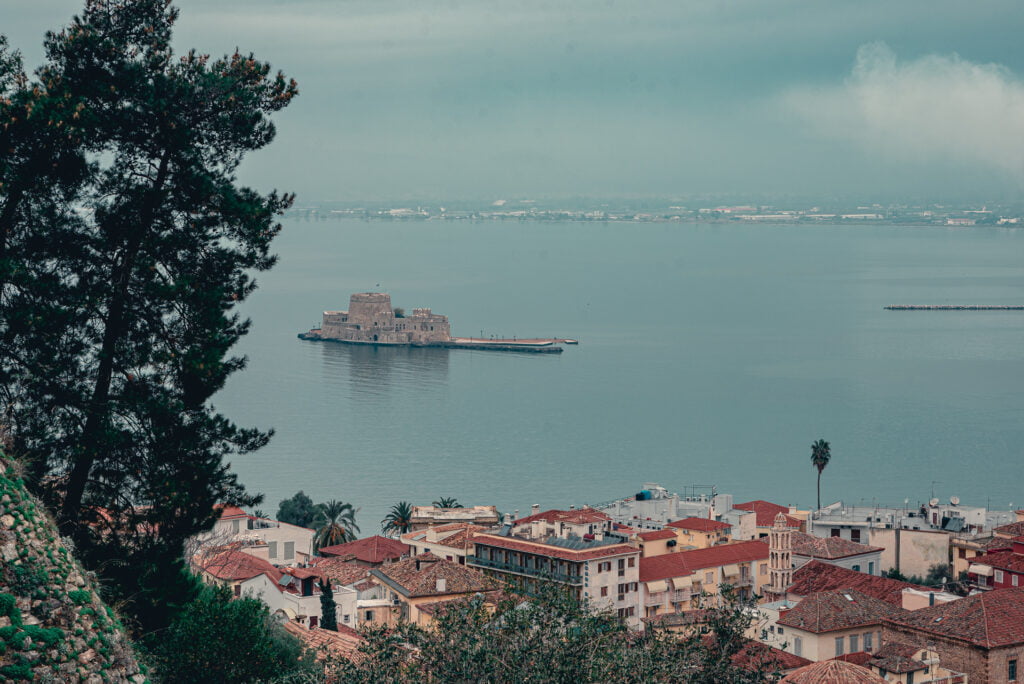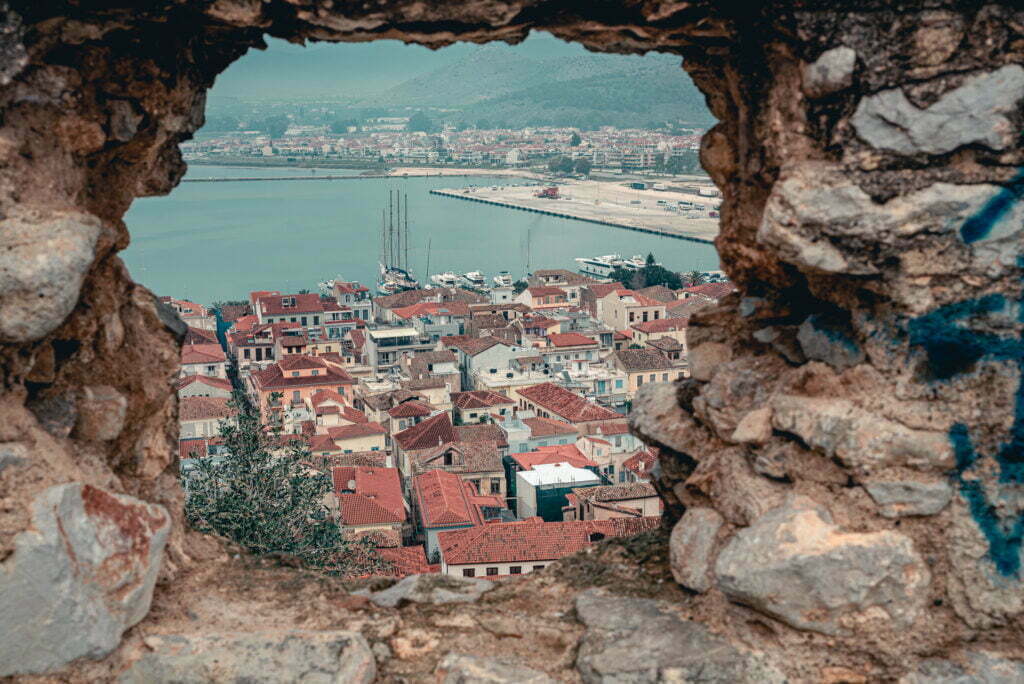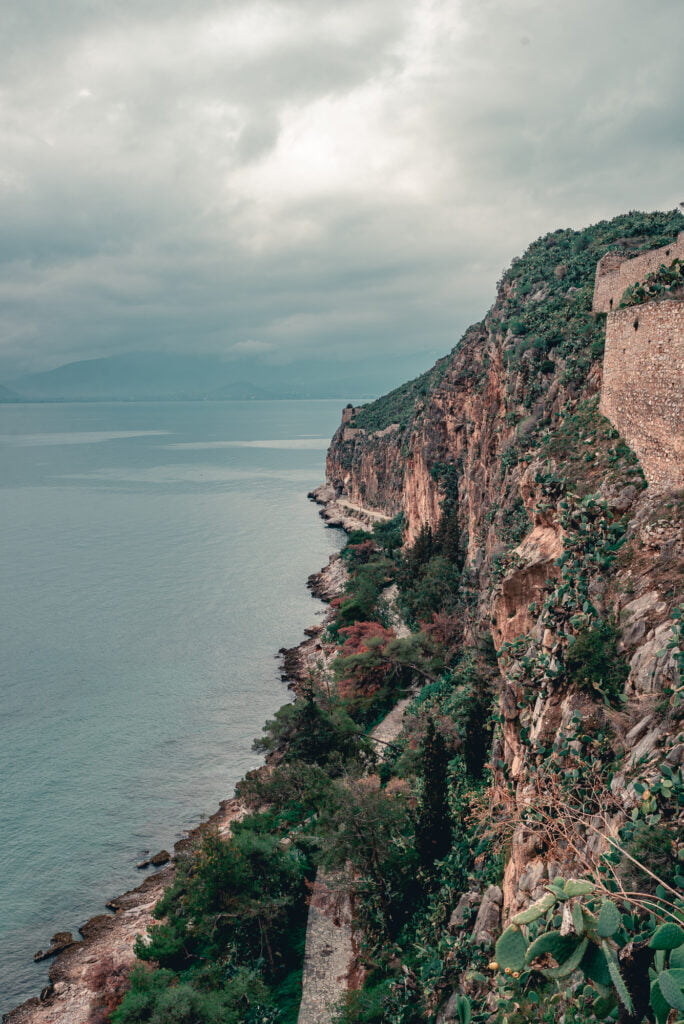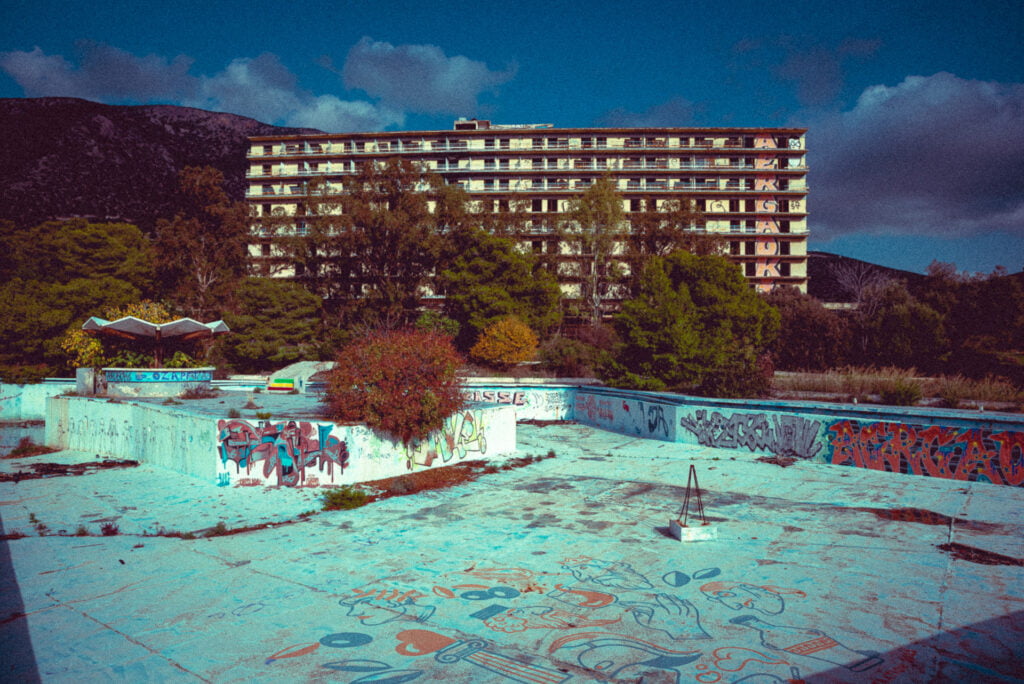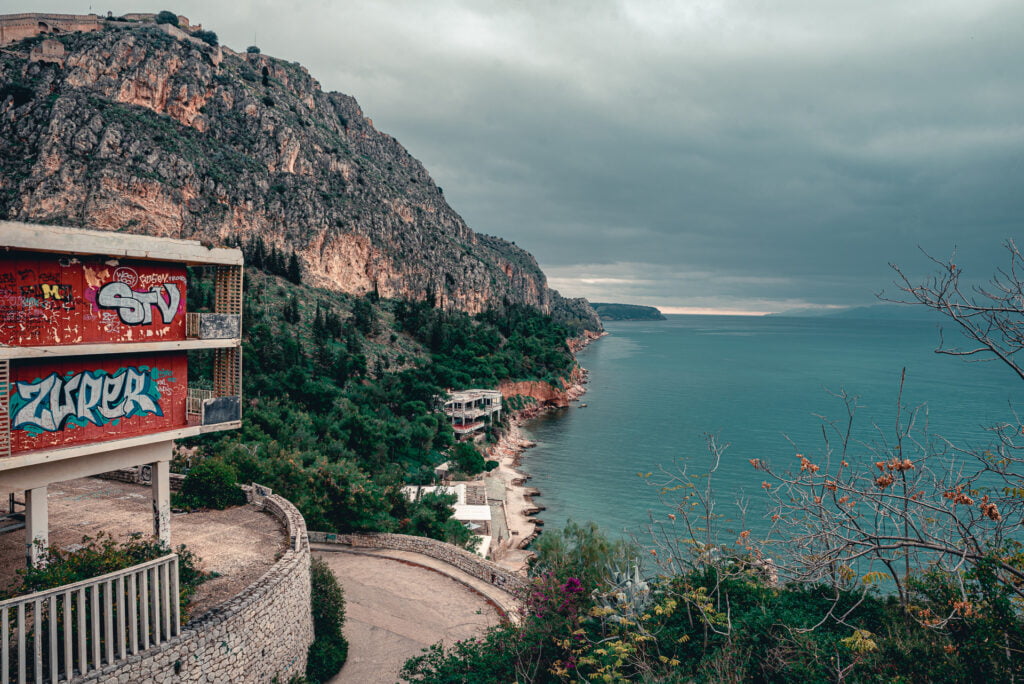We stay on the Peloponnese for a while because there are still a few places worth mentioning. Apart from our mishap last time, it is already clear that this peninsula is a true paradise for campers (or #vanlifers for those who are cool). You stand and go almost where you want and due to the absence of the large masses, this is also sustainable and pleasant for everyone. In contrast to other countries such as Spain, where certain villages and regions are suffering from motorhome tourism. In this post we visit the authentic Monemvasia, the cozy town of Nafplio and as icing on the cake we wouldn’t be Euronauts if there weren’t an abandoned hotel on the menu. Let’s go!
Monemvasia: A Dive into the Petrified Ship of the Mediterranean
We set course for the eastern finger of Peloponnese. That’s where Monemvasia is, and frankly, the reason we drove there was because everyone coming from the opposite direction said we should definitely go there. We parked Nigel, accompanied by Kai and Amber, in the parking lot of the fishing port of Gefyra, along which you can reach Monemvasia over an old bridge. From the parking lot we enjoyed the turbulent sea and a beautiful view of a huge rock a little further into the sea:
Often described as the ‘Gibraltar of the East’ or the ‘Petrified Ship’, Monemvasia is a stunning medieval fortified town on the eastern coast of the Peloponnese in Greece. This impressive rock, separated from the mainland by an earthquake in 375, is home to a rich history dating back to the Byzantine period. Founded in 583 by inhabitants fleeing the Slavic and Avar invasions of the Peloponnese, Monemvasia quickly became a thriving trading port and a strategic military post that defied the ages. This city, with its warren of narrow cobbled streets, preserved Byzantine architecture, and unparalleled views of the Aegean, reflects the depth of Greek history, encased in stone and surrounded by the endless blue waters of the Mediterranean.
We understood the link with Gibraltar and the view of “Petrified Ship”. But it wasn’t until we walked around the island that we discovered the beautiful town on the other side of the rock. Once you walk through the old gate and the cars can no longer go any further, you are in the middle of Monemvasia. It reminded us a bit of Le Mont Saint-Michel without being squashed by the masses, or other medieval towns like Kotor and Carcassonne. The big difference is the Byzantine style that is noticeable everywhere.
The lower part has been beautifully restored and many projects are still in progress. But as you climb higher up the rock you are greeted by ancient ruins and a beautifully restored Orthodox church: the Hagia Sofia. If this name should ring a bell, it probably rings in Istanbul, because there is a church of the same name that is slightly larger. But the Byzantine style is very recognizable in both cases.
Meanwhile the sun started to sink towards the sea. Due to our late walk we avoided masses. Even though it was already early December, tourism is no longer sleeping. By the way, that is an obvious tip that we can give everyone if you visit something touristy: Go very early or go late. After all, we are not the type of traveler who wants to spend a whole day strolling around in an old city, have an extensive lunch on a crowded terrace in the afternoon and leave the site by late afternoon.
Nafplio: Cozy streets, beautiful views
Imagine a place where the past is alive on every street corner, where narrow cobbled streets invite you to get lost in time, and where a mix of cultures has contributed to a remarkable urban landscape. That’s Nafplio, located on the calm waters of the Argolic Gulf in the northeastern part of the Peloponnese. By the way, Nafplio was (briefly) the capital of modern Greece.
Conquered by Venetians and Ottomans, Nafplio has an undeniable cultural mosaic. Proudly watching over the city from its hilltop, Palamidi Castle offers breathtaking views, while the historic old town offers a maze of streets to explore.
Initially we parked our campers in a large parking lot outside the city on the water. Not exactly a cozy place to spend the night, but we didn’t intend to. As we started to step towards the center of Nafplio we were first greeted by an old steam train. No longer operational, but nice to look at and climb into. We continued into the city and strolled through the narrow streets. It soon went uphill and from the old castle we were treated to beautiful views of the city and the sea.
For lunch, we went out for dinner once. We ended up in a vegan falafel tent. Where we indulged in sweet potato fries, hummus and of course falafel. We spent the night a little further in a beautiful bay. There we met Arthur, who drives around in an old wooden Mercedes truck. The striking color made us suspect that we had already seen it somewhere. And not much later it turned out that we saw him and his truck in Roche, Spain, in 2021. Meanwhile, Arthur is busy building a homestead in the mountains, not far from Athens.
The next day we decided to take the walking track along the coast, about 5 km to get back to Nafpio, where it was market day. We spent an exceptional two days in this pleasant city. The old walking path is wide and definitely worth doing if you are in the area.
Bonus: The abandoned hotel in Saladi
The next notable stop was in Saladi. In addition to a large stretch of beach where you can stand in peace as long as you want and a prehistoric cave that you can visit, there is also a large apartment block that used to be a hotel, the Saladi Beach hotel. Less stately and charming than the Yugoslavian hotel we visited before, but always nice to visit. There is little information available about this hotel. It would have been a nudist paradise that was eventually forced to close under pressure from the church. Whether this story is correct, we do not know, because we read a reaction online from someone who claims to have stayed in the hotel in 2000, and we can hardly imagine that in 2000 the church would still have had such an influence, but of course it is possible. In any case, we were busy for a few hours walking through the carcass of this hotel and making our way to the roof.



